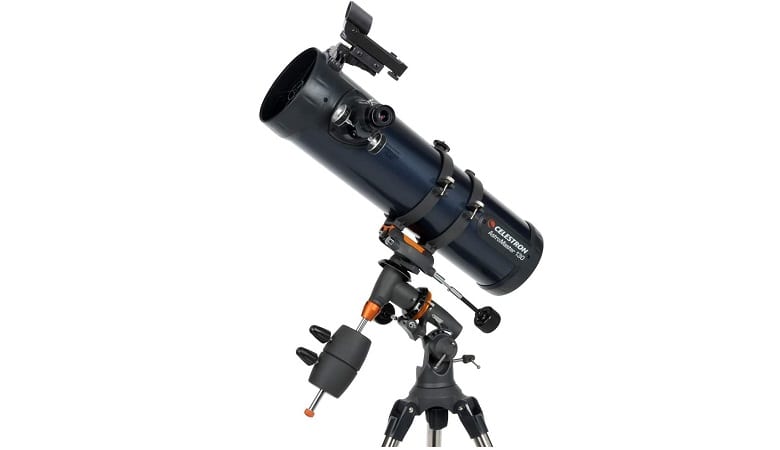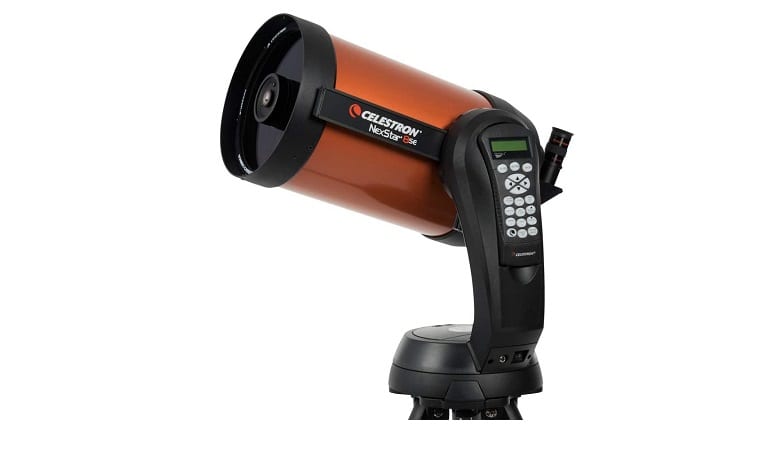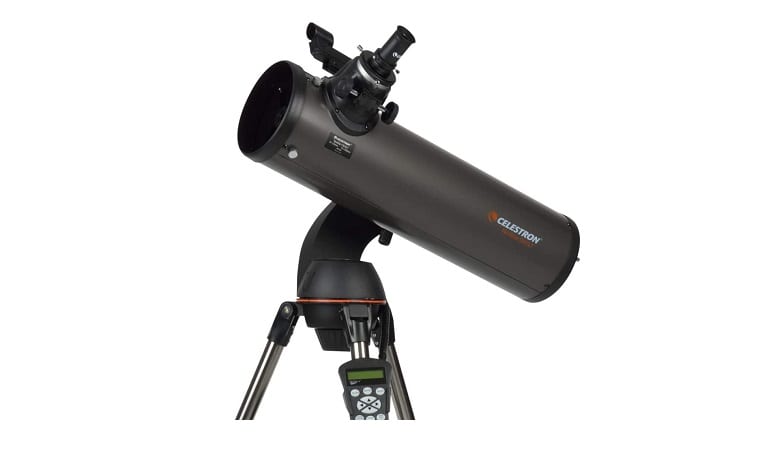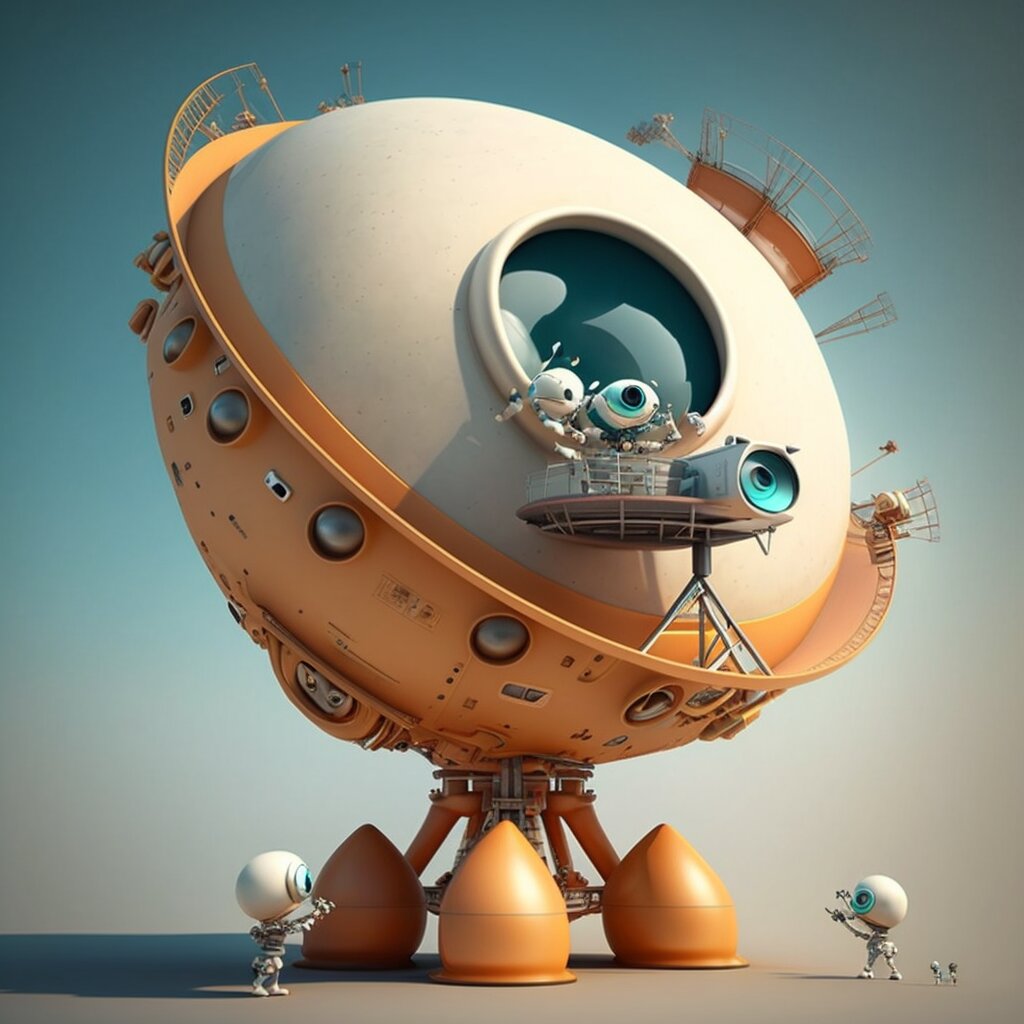Rank | Photo | Model | Rating | More Info |
#1 | BEST OVERALL Orion 09007 SpaceProbe 130ST Equatorial Reflector Telescope | |||
#2 | Celestron AstroMaster 130EQ-MD Newtonian Telescope | |||
#3 | BEST FOR DEEP SPACE ASTROPHOTOGRAPHY Celestron NexStar 8SE Computerized Telescope | |||
#4 | BEST UNDER $500 Celestron NexStar 130SLT Computerized Telescope | |||
#5 | BEST FOR BEGINNERS Gskyer AZ Mount Astronomical Refracting Telescope |
Maybe you love stargazing but you’d love to be able to see the objects in the night sky better as well as take pictures of them.
Astrophotography is a wonderful hobby that will keep you busy for several hours at a time, but it can be expensive.
How can you make astrophotography more affordable?
Finding the right telescope doesn’t have to cost a lot of money. You can find ones that are more budget-friendly while still affording you amazing views of planets and other objects.
With that in mind, let’s explore the best telescopes for astrophotography. We’ll start with the one that’s the best to purchase if you’re serious about your stargazing hobby.
Best Telescope For Astrophotography – Reviews & Buying guide for 2020
Best Overall: Orion 09007 SpaceProbe 130ST Equatorial Reflector Telescope
This sleek and clean telescope makes the number-one spot on our list. Here’s everything you need to know about it.
Featured specs
- 129mm aperture
- EQ-2 mount
- 130mm parabolic primary mirror
Benefits
- This is a 5.1-inch (129mm) aperture reflector telescope that collects enough light so that you can accurately see the moon and planets, as well as star clusters, galaxies, and nebulas, making it a comprehensive telescope to own.
- It’s got a 24-inch optical tube. This makes it easy to carry around with you if you want to go on a stargazing road trip.
- This telescope is light. It weighs just 27 pounds which also makes it easy to transport.
- It comes with lots of extra items that will make your stargazing even more enjoyable. These include two Sirius Plossl eyepieces, a finder scope, a rack and pinion focuser, a collimation cap, a tripod accessory tray, and a Starry Night astronomy software.
- The telescope comes with an EQ-2 equatorial telescope mount that’s very stable and sturdy.
- You can also adjust the tripod in order to achieve slow-motion celestial tracking, which is sure to make using this telescope a fun activity for the whole family.
- It’s got a 130mm parabolic primary mirror to further help you see objects that are deep in the sky.
Drawbacks
- A common complaint from people who have used this telescope is that the EQ2 mount tends to vibrate. This results in the telescope losing focus.
- Some people have reported that when using the 10mm Plossl eyepiece you have to be positioned extremely close to its lens, but this can cause discomfort, especially if you wear glasses.
- People have said that the instructions that come with the telescope don’t provide enough assistance, which has resulted in them having to find YouTube videos and other resources to help them set up the telescope.
Extra Features
- The software that’s included in the pack enables you to enjoy sky simulations that are very realistic and you’ll receive explanations of what you see in the sky, which makes it family-friendly.
- People who previously had no experience with using telescopes found this one easy to assemble and use.
- People have said that the telescope provides clear and high-quality images.
Buying Advice
This Orion telescope is the real deal if you want to see planets and other objects in the sky. It’s a valuable item that you’ll make great use of with the kids.
Runner Up: Celestron AstroMaster 130EQ-MD Newtonian Telescope
At first glance, this telescope looks a bit more complicated than the Orion one we already featured but it’s actually easy to use and doesn’t cost a lot of money.
Featured specs
- AstroMaster mount
- 370x highest magnification
- More light capturing capability than previous models
Benefits
- This is a Newtonian telescope, and this type has many benefits. Newtonian telescopes tend to have wide fields of view so they’re great for bringing deep-sky celestial objects into focus.
- The telescope comes with lots of features in the pack: fully-coated glass optics, a light but sturdy frame, a StarPointer red dot finderscope, a tripod that’s adjustable, and two eyepieces.
- If you want to make use of seeing objects in the sky in slow motion, you can do so easily with the use of the AstroMaster mount that contains two slow-motion knobs for the ultimate precision.
- With this telescope, you’ll be able to see clear and detailed views of planets as well as Jupiter’s moons, Saturn’s rings, and much more. Provided that it’s dark enough outside, you’ll be able to see amazing details, such as bands of clouds on Jupiter, Martian ice caps, and many moons of Saturn.
- As long as you set it up correctly, you’ll have clear and quality images within reach.
Drawbacks
- Some people have reported that, while the telescope has some parts that are value for money, such as its aperture mirror optics, other parts you receive in the pack are of below-average quality.
- Others have reported that the tripod isn’t stable enough to prevent the telescope from tipping over.
- It takes quite a bit of time to learn to use this telescope, with some people who have purchased it claiming that they still haven’t been able to see anything in the sky. Therefore, it might not actually be the best telescope for beginners.
Extra Features
- Setting this telescope up is easy and quick, with no extra tools required for its assembly. That is definitely nice for beginners!
- You’ll receive a free download of astronomy software with your purchase.
- It’s easy to take this telescope to the backyard or your other stargazing locations– it only weighs 37 pounds.
Buying Advice
If you’re looking for an astrophotography starter kit, this one might prove a little difficult to grasp. However, if you already have some experience, then this is the best telescope for astrophotography. It costs $299.95.
Best Telescope For Deep Space Astrophotography: Celestron NexStar 8SE Computerized Telescope
If you want to photograph deep-space objects, you’ll need to get your hands on this telescope. Here’s why.
Featured spece
- 203mm aperture
- Automated mount
- Rich database of celestial objects
Benefits
- This telescope has an eight-inch (203mm) aperture that gathers the light really well. This is important if you want to see more celestial objects in better detail.
- One of the features that makes this such a fantastic product for beginners is that it has a mount that’s completely automated.
- This telescope can track and find celestial objects for you. It makes use of a database of over 40,000 celestial objects.
- If you need to transport this telescope, you can do so easily. Both the steel tripod and fork-arm design can be dismantled into separate parts.
- If you’re excited to capture images of objects in the sky, you’ll love that you can use adapters to connect your telescope to your astronomical camera.
Drawbacks
- People have complained that the device wobbles a bit too easily once it’s been set up.
- It’s difficult to take clear and sharp images at times because the telescope’s arm is very sensitive to vibration.
Extra Features
- The pack includes a 25mm Plossl eyepiece, a mirror star diagonal, a visual back, and a red dot StarPointer finderscope.
- This product is compatible with other Celestron accessories, such as the WiFi module and StarSense AutoAlign, so you can easily upgrade to a deeper experience of astrophotography in future.
Buying Advice
This is the best telescope for astrophotography under $1300. While it’s more expensive than other telescopes we’ve already featured on our list, it does have many features that are worth exploring if you’re serious about astrophotography.
Best Telescope For Astrophotography Under $500: Celestron NexStar 130SLT Computerized Telescope
If you want to get into astrophotography, you might be held back by the thought that it’s expensive. But it doesn’t have to be. You can enjoy a high-quality telescope that doesn’t break the bank, like the Celestron NexStar 130SLT, which is a computerized telescope.
Featured specs
- Automated tracking
- 130mm aperture
- SkyAlign feature
Benefits
- This telescope has a database of over 40,000 nebulae, stars, galaxies, and much more.
- It’s a joy to use because it finds objects in the sky with accuracy.
- It has an aperture that’s 130mm so that you will have more than enough light to see the Solar System’s jewels.
- It’s compatible with two-inch eyepieces.
- Setting up this telescope is fast, thanks to the SkyAlign feature.
- Even if you’re passionate about astronomy, it’s not always easy to know how to start with your astrophotography hobby. That’s why there’s the Sky Tour available. This is a feature that generates a list of celestial objects which are visible based on where you are and the time in your location.
Drawbacks
- Some people have reported dissatisfaction with the product because they have had to purchase extra items in order to use it properly, such as camera adapters and cables.
- Others have reported that it’s extremely difficult to get the telescope to align.
- There’s a lack of instructions for this product, which can be frustrating for a beginner in astrophotography.
Extra Features
- This telescope can be used with all of Celestron’s accessories, such as the SkyPortal WiFi Module and StarSense AutoAlign.
- The features you’ll receive in the pack are as follows: two eyepieces, a red dot StarPointer finderscope, and an adjustable steel tripod that has a convenient accessory tray. As seems to come standard with many telescopes, you’ll also receive free software.
Buying Advice
If you want a telescope but you don’t want to spend a lot of money, this is a good one to try. However, be warned that you will have to take your time to learn how to use it, but that’s part of the fun!
Best Beginner Telescope For Astrophotography: Gskyer AZ Mount Astronomical Refracting Telescope
Although this is said to be for kids, adult beginners in astrophotography can definitely make good use of it. It’s got lots of valuable features that make it stand out in the crowd, which is why it’s an Amazon bestseller.
Featured specs
- 70mm aperture
- Barlow lens
- Smartphone adapter included
Benefits
- This has a 70mm aperture to help you see objects in the sky with enough light.
- It’s got a fully-coated optics glass lens with high-transmission coatings. This not only helps to produce amazing images but it also protects your eyes.
- In the pack you’ll find two replaceable eyepieces and a 3x Barlow lens.
- This lens is important because it increases the magnifying power of the eyepieces by three times.
- You also get a 5×24 finder scope that has a mounting bracket. It’s got cross-hair lines to help you find objects even easier.
Drawbacks
- You might become frustrated with the way that you can’t put your eye right against the looking lens when looking through the telescope, like you need to do with some other telescopes. You have to ensure you always keep your eye about an inch away, which will take some getting used to.
- The tripod is not sturdy enough, which can get in the way of your activity.
- The views of planets and the moon are not as clear as some people who’ve purchased this telescope would have liked them to be.
Extra Features
- As a bonus, you’ll receive a smartphone adapter as well as a wireless camera remote so you can take pictures of what you see in a convenient way.
- The telescope has an adjustable tripod that’s made of aluminum alloy.
- You’ll receive a carry bag to make it easy to take this telescope to your favorite stargazing location.
- You get lifetime maintenance from the company when purchasing this telescope.
Buying Advice
This Gskyer telescope is perfect telescope to buy if you or your kids are interested in astrophotography.
Telescope For Astrophotography FAQ
What is the best telescope for astrophotography?
If you want to learn more about astrophotography and how to get started with your hobby, read the following questions and answers.
They will help you figure out if you need a telescope for astrophotography as well as help you learn more about astrophotography in general.
Do you need a telescope for astrophotography?

One of the questions you might wonder when you start becoming interested in astrophotography is if you really need a telescope. Some people say that you can find many ways to satisfy your stargazing need without a telescope.
An example of how to capture images without a telescope involves using a standard lens and camera.
You’ll need to ensure you have a DSLR camera and its performance can be enhanced if you make use of IR modification – this is the removal of the stock standard infrared filter – which will enable you to see and capture things like the red hydrogen alpha of emission nebulae, as Photographing Space reports.
Despite the above, there are important benefits to using a telescope. These include being able to capture detailed images of objects in the sky without a hassle. Telescopes collect light so that what you see can be studied in greater detail.
By ensuring you have a telescope with a mount, you’ll be able to track celestial objects so that you can view and take pictures of them. This also means that you’ll be able to see objects that you would never see with the naked eye.
Another benefit of using a telescope is that it comes with eyepieces, and these allow you to magnify images.
You can find telescopes that are much cheaper than cameras.
Finally, there’s also the feeling you get when you use a telescope to view planets and stars. It often feels more exciting and mystical than using a camera.
Which type of telescope is best for astrophotography?
Some telescopes can be expensive, so you want to be sure that you’ve chosen the best one that’s value for money and does the job well.
If you’re an experienced astrophotographer, you’ll usually find that a four or five inch apochochromatic refractor will work really well for taking images of objects in the deep sky, as Astropix reports. This is because it’s versatile.
But what if you’re a beginner?
Then, a small refractor that’s around 65 to 80mm will work well. When you have a smaller telescope it’s easier to handle and you’ll be able to mount it too, which is a bonus.
How to choose a telescope for astrophotography?
When choosing the right telescope, it helps to remember the features you should look for so that you choose one that will serve you well and make you feel excited – instead of frustrated – whenever you take part in astrophotography.
Here’s a rundown of some of the most important features.
Telescope Mount
The mount is the most important thing you need when engaging in astrophotography because it’s what will help you track the objects in the sky. A motorized mount is beneficial. Since the earth rotates, this causes celestial objects to seem to move very slowly through the sky.
If you think you can use a telescope without a mount, you’ll battle to properly locate and track these objects because they’ll always be moving out of view of the telescope.
Aperture
The telescope aperture is basically the size of its lens in the case of a refractive telescope. The bigger it is, the more light it can collect to enable you to properly view objects in the sky. This also means that the images you capture will be more detailed.
Ideally, you should look for an aperture size that’s at least 75mm. There are some telescopes on our list of reviews that have this aperture size. The Celestron NexStar 130SLT computerized telescope has an even larger one – 130mm!
Ease Of Use
Whether you’re a beginner or you have some experience with astrophotography, you want to ensure that the telescope will be easy to set up and use.
This is especially important if you want to be able to use the telescope with your kids. A refractor telescope is the simplest to set up and use, and that’s one of the reasons why it’s the best type of telescope for astrophotography.
What type of camera should I use for telescope astrophotography?
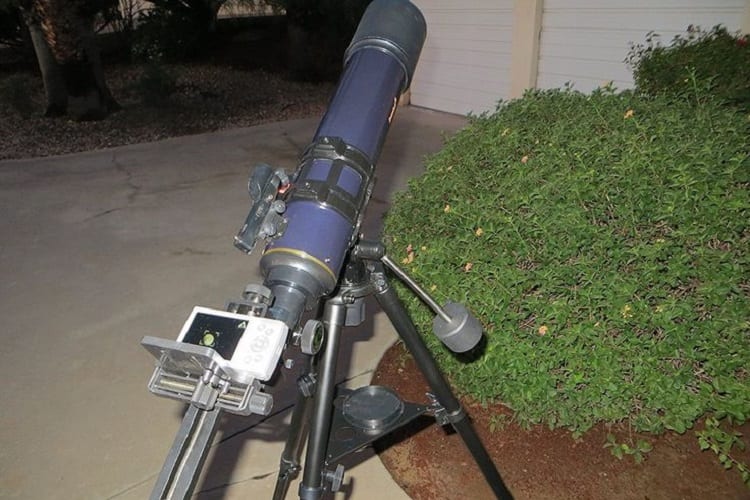
You can’t make use of astrophotography if you don’t have the right camera at your disposal. But which one is best for you?
If you have no experience with choosing cameras to take pictures of the deep sky, you might feel overwhelmed. But don’t be. Here’s what to know about choosing the best astrophotography camera.
A DSLR camera is an excellent choice for astrophotography because it will ensure that you get high-quality images. It can be used with multiple lenses and it tends to have a long battery life. However, something to bear in mind with these types of cameras is that they can be a bit heavy.
Astro Backyard offers some fantastic options depending on what pictures you want to take.
A full-frame DSLR camera such as the Canon EOS 6D is a good choice if you want to shoot astrophotography nightscapes, with an example being the Milky Way.
Full-frame DSLR cameras are also great for landscape photography. Make sure you choose a 3mm camera sensor that will provide you with images that have wide angle.
Another option at your disposal is a mirrorless camera. By not having mirrors inside them, these cameras have sensors that take image previews, and these previews are either shown on an electronic viewfinder or the LCD screen.
These cameras are lighter than DSLRs and many models have an autofocus feature that works better than what you’ll find in some DSLR cameras.
However, some drawbacks of these cameras is that they tend to have a shorter battery life than DSLR cameras and they also don’t enable you to use a large variety of lenses.
A good mirrorless camera to consider is the Sony Alpha A7 III. It has an excellent dynamic range and large ISO range, therefore enabling you to take pictures even when visibility is poor.
Now, you might be wondering what dynamic range and ISO are. These are important features you should look for in a camera you’ll use for astrophotography. There are others, so let’s take a look at them.
ISO
ISO stands for International Organization for Standardization. This is basically an organization that sets standards for measurements.
When it comes to cameras, such as the ones you’ll use for astrophotography, the ISO is basically how sensitive your camera is to the light and it will be measured in a number, such as 200 or 400.
Making use of ISO enables you to control the image exposure and how much light the sensor of your camera will pick up.
You need a good ISO number to get great shots, and you also have to ensure that the camera you use will be able to handle the increased ISO otherwise your images won’t be of a good quality. An ISO of 800 is considered good to collect enough light to see various celestial objects.
Camera Sensor
The sensor of your camera is important because it collects light. Two main types of sensors are full frame sensors and cropped sensors.
- Full frame sensor – this is a digital single-lens reflex camera that has a 35mm image sensor format. It’s said that it can produce a high dynamic range (we’ll get to what that is next!) to create better quality in your images.
- Cropped sensor – this is smaller than full frame and comes in a variety of sizes. The bigger its size, the more light will be collected, and the better your images will look. While that sounds pretty good, it’s said that full frame sensors provide higher-quality images.
Dynamic Range
You want a camera that has a high dynamic range. Dynamic range basically refers to the difference between the darkest and lightest parts of an image.
By ensuring that your dynamic range is high, this means that you’ll be able to take pictures of the night sky in situations where there’s not a lot of light. It also enables you to capture areas of shadow as well as light in much better detail.
Manual Settings
You want to be able to control the above features of your camera, such as the shutter speed and ISO, so make sure you look for a camera that has manual settings.
Multiple Lens Capability
You want to ensure that your camera enables you to change its lenses. With astrophotography, you can’t just get by with one lens.
For example, you’ll need to use a wide-angle lens if you want to shoot images of galaxies, but for more details in deep-sky objects you’ll also need a telephoto lens.
How to mount a camera on a telescope for astrophotography?
If you want to mount a camera onto your telescope so that you can take pictures of what you see in the night sky, you’ll have to ensure that you do it properly.
If you’re making use of a DSLR camera, it will need to be attached to your telescope with the use of a T-ring. How this works is by locking onto the body of the camera in the same way that you’d put a lens on it. You’ll also need an adapter that will be put onto the T-ring.
Make sure that the T-ring fits the lens mount design. Finally, to ensure the adapter is correctly attached to the T-ring and your camera, you’ll need a barrel that’s either two inches or 1.25 inches in size, as Astro Backyard reports.
The adapter should fit properly into the telescope focus drawtube so that the camera won’t wobble as this will distort your pictures.
Now, the opening for the eyepiece on the telescope has locking screws – these are there to keep your eyepiece or camera in place, so make use of them.
You must also fasten the camera onto the focus tube correctly so that it won’t slip out when your telescope moves upwards.
Pro tip: when taking pictures with your camera-telescope, you should use a remote shutter release cable. What this does is let you capture images without you having to touch the camera, so it can make the process much easier and free of vibrations.
You can even program a sequence of images to be taken simultaneously, just like with a regular camera, which is great.
Conclusion
If you want to view what’s in the sky which the naked eye can’t see, you’ll love getting into astrophotography because you’ll also be able to capture those breathtaking images.
In order to get started, you might want to consider using a telescope. This doesn’t have to be expensive and you can find ones that are tailored to beginners. In this guide of reviews, we’ve looked at the best telescopes for astrophotography, with different ones based on the features you want.
It’s exciting to get started in astrophotography, and with one of the telescopes on our list, you’ll be able to enjoy hours of watching the galaxies in the night sky.


